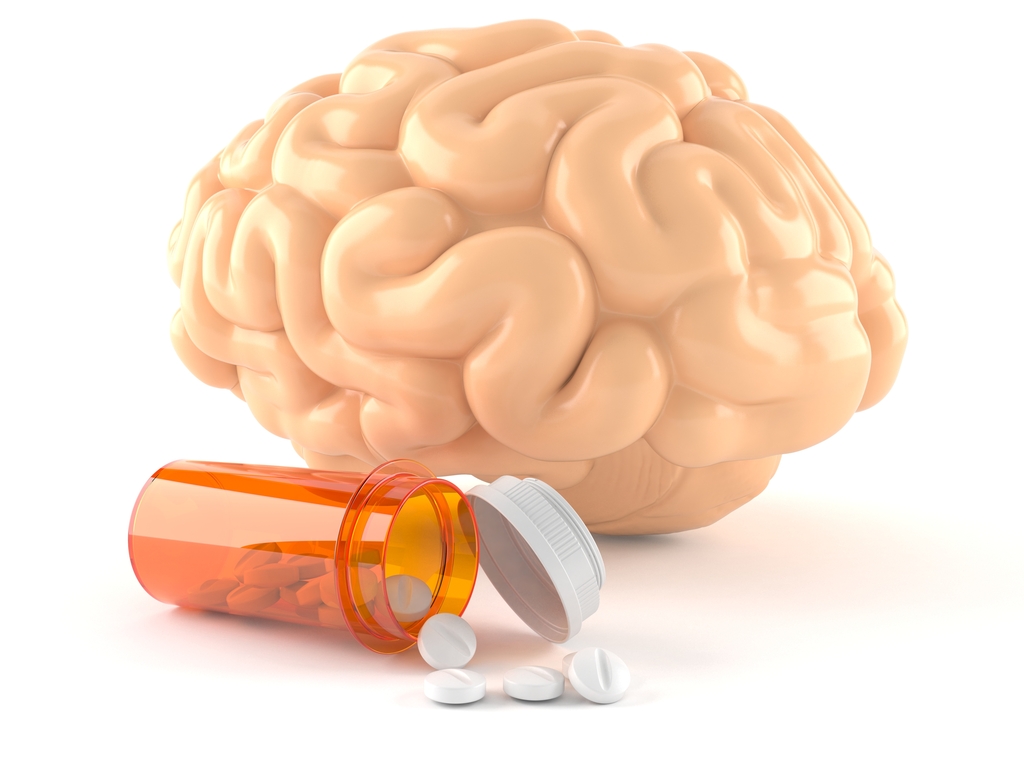Antidepressant Mirtazapine Helps Preserve Motor Function in Rett Patients and Mice, Study Finds
Written by |

Treatment with the antidepressant mirtazapine preserves motor and respiratory function, as well as social behavior, in women with Rett syndrome, a study shows. Improved motor function also was seen in a mouse model of the disorder.
The study, “Protective role of mirtazapine in adult female Mecp2+/− mice and patients with Rett syndrome,” was published in the Journal of Neurodevelopmental Disorders.
Mutations in the MECP2 gene, located on the X chromosome, is the most common cause of Rett syndrome, a disorder that mostly affects girls. The gene carries the instructions to produce the MeCP2 protein, important for growth and communication between nerve cells.
The different mutations in the MECP2 gene, along with other processes, contribute to the variety of symptoms seen in Rett patients. Still, common symptoms include impairments in hand skills and spoken language, as well as abnormal walking.
Because Rett’s onset occurs most often during childhood, few studies have focused on adults.
Previous research has shown that the levels of several neurotransmitters — molecules that act as chemical messengers — with a role in mood are reduced both in patients and mouse models of Rett, suggesting that anti-depressants could have a therapeutic effect in this disorder.
Desipramine, an anti-depressant (sold under the brand name Norpramin, among others) was successfully used in mouse models of Rett. However, it failed to show clinical benefits and was linked to significant side effects in a Phase 2 clinical trial.
Now, a group of researchers in Italy first investigated another anti-depressant, mirtazapine (sold as Remeron, among other names) in female mice engineered to mimic Rett symptoms.
Mirtazapine was injected intraperitoneally (into the abdomen) of 6-month-old mice, including the Rett model and a control group, every two days for 30 days at a dose of 10 mg/kg. Notably, this dose is equivalent to 50 mg/day — the maximum dose — in humans.
The researchers assessed the animals’ motor coordination before, during and after treatment, using two tests: the horizontal bar, and the dowel test. In the horizontal bar test, the mouse hangs, with his forelimbs only, on a horizontal bar and the scientists measure how long it takes until they fall. The maximum test duration was 30 seconds.
In the dowel test, the animal is placed with its four paws on the edge of a thick wooden dowel until it falls, with a duration of 120 seconds (two minutes).
Results were assessed with a delta score, in which a negative score indicates worsening performance, and values around zero indicate no changes.
Untreated animals in the Rett group had negative scores in both tests (2.22 in the horizontal bar test and 33.4 in the dowel test), while control mice maintained an optimal performance. In turn, mice in the Rett group showed scores close to zero after mirtazapine, and half of the mice even improved their motor function.
These two tests also were used to evaluate potential rapid effects of mirtazapine in the middle of treatment. Yet, no significant benefits were detected, which indicates that long-term treatment is key, the scientists said.
Three other motor function tests were performed at the end of the treatment: the open field test; the nest-building test; and the rod walk test.
In the open field test, the mouse is placed in the center of an open field and is left free to explore for 20 minutes. This test assesses both general motor function and anxiety levels.
Mice mimicking Rett symptoms walked a significant shorter distance compared to controls, meaning more anxiety and less exploratory behavior.
In the nest-building test, mice are placed alone in a cage with nesting material. This assessment evaluates fine movements of the forepaws. No differences were observable between the two groups of mice.
In the rod walk test, mice are placed on one edge of a wooden dowel under a repulsing stimulus (strong light), with an attractive stimulus, a dark cage with a mouse nest, on the other end.
Results showed that the Rett group had a clear deficit in motor coordination compared to controls, as reflected by taking longer to travel along the dowel.
Notably, treatment with mirtazapine had no effects in any of these three tests.
Tests in women
Next, the investigators analyzed 80 women with Rett (mean age 23.1). Half of them received mirtazapine as a therapy for anxiety, mood disorder, and poor sleep. Disease severity was measured using the Rett clinical severity scale (RCSS) and motor performance using the motor behavioral assessment scale (MBAS), which also evaluates social behavior and respiratory function. In both cases, higher scores indicate worse manifestations.
Mean daily dose of mirtazapine was 11.72 mg and treatment lasted a mean of 1.6 years. Treatment was well-tolerated by 36 patients, while four were discontinued due to anxiety.
Untreated patients showed significantly worse symptoms, as reflected by higher RCSS and MBAS scores, while those given mirtazapine showed significantly better (lower) scores compared to pre-treatment regardless of dose and treatment duration.
In MBAS, women on mirtazapine showed statistically significant improvements in 10 of 16 items linked to social behavior, four of seven items of respiratory function, and eight out of 14 of motor function.
Mirtazapine treatment decreased irritability/aggressiveness, and halted deterioration of social interactions, as well as of motor and respiratory function. In addition, the researchers observed that mirtazapine significantly reduced the number of night awakenings.
“Besides the efficacy in regulating sleep and mood disturbances, which was the initial reason for prescription in adult RTT [Rett] patients, it is noteworthy that MTZ [mirtazapine] treatment could improve or slow down several of the behavioral abnormalities listed into the RTT natural history study,” the scientists wrote.
“Taken together, our findings support the potential of MTZ for improving the quality of life of RTT patients and their families” they concluded.





